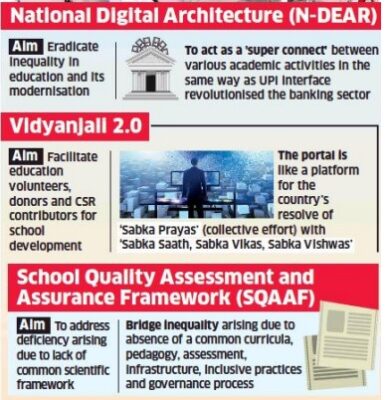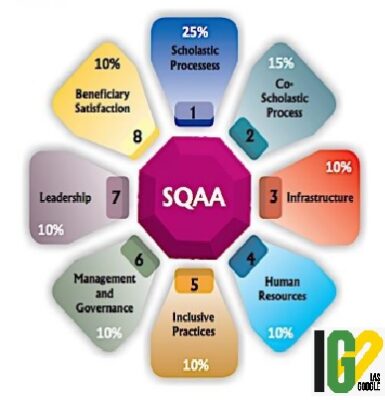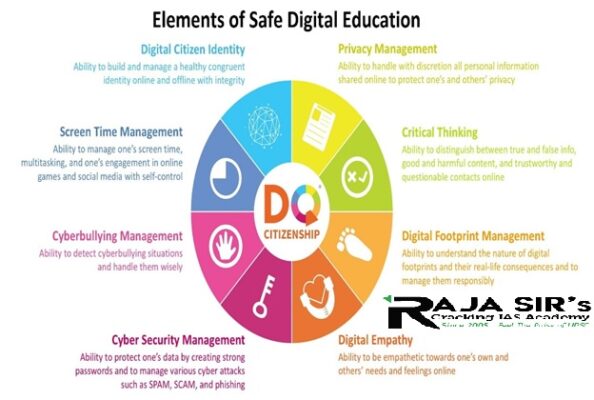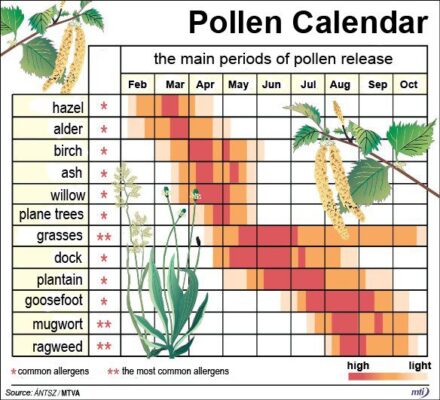- Home
- Prelims
- Mains
- Current Affairs
- Study Materials
- Test Series
10th Sep 2021
E-CIGARETTES WITH NICOTINE CAUSE BLOOD CLOTTING, INCREASED BLOOD PRESSURE: STUDY
According to research, using e-cigarettes containing nicotine causes an immediate increase in the formation of blood clots.


 1. Indian Sign Language (ISL) Dictionary:
1. Indian Sign Language (ISL) Dictionary:




- It causes deterioration in the ability of small blood vessels to expand and dilate, as well as raised heart rate and blood pressure.
- These effects are similar to those caused by smoking traditional cigarettes and with long-term use; they could result in a heart attack or stroke.
- Nicotine is the addictive substance (chiral alkaloid) found in tobacco plant/products.
- The drug can affect a person's brain function and is known to increase levels of hormones such as adrenaline in the body, which in turn can increase formation of blood clots.
- The visa was announced under the banner of ‘Projects of the 50’.

- The new ‘Green Visas’ will allow expatriates to apply for work without being sponsored by an employer.
- Green visa holders can sponsor their parents and children who are up to the age of 25.
- The government will allow people who’ve lost their jobs to remain in the country for up to 180 days, a major boost as most visas is tied to employment contracts.
- The project is a series of development and economic projects.
- Aimed at making UAE an ideal destination for highly skilled individuals and investors, a restructuring of the entry and residency system.
- Under the programme, another stream of visa was announced, like the federal freelancers visa for self-employed workers based in the UAE and overseas in specialised fields such as artificial intelligence, blockchain and digital currencies.
- The existing Golden Visa eligibility will be expanded.
- Business trip permits also stand increased from three months to six months.
- The programme was launched on March 17, 2021 at Lumdung village in East Kameng district by the Minister of Environment & Forests.
- It is completely voluntary and is aimed at gradually easing the people into the concept of conservation.
- Guns were surrendered and in return, the person got a certificate of appreciation.
 1. Indian Sign Language (ISL) Dictionary:
1. Indian Sign Language (ISL) Dictionary:
- The Dictionary is launched by Indian Sign Language Research and Training Centre, an Institute under the Department of Empowerment of Persons with Disabilities (Divyangjan).
- The 3rd edition of the ISL Dictionary contains a total of 10,000 terms of everyday use, academic terms, legal & administrative terms, medical terms, and agricultural terms.
- The Dictionary contains regional signs used in different parts of the country.
- 1st edition of the ISL Dictionary was launched on 23rd March 2018 with 3000 terms.
- 2nd edition with 6000 terms (including earlier 3000 terms) was launched on 27th February 2019.
- School Quality Assessment and Assurance (SQAA) is launched by Central Board of Secondary Education to provide global parameters of attainment as standards in schools affiliated to it.
- To enhancement of quality, recognition of excellence, promotion of accountability, across a range of descriptors or indicators of assessment.

- It captures the unique ethos of an institution such as nurturing and promoting excellence in sports etc.
- This will provide a degree of choice to a student or parent looking for specific qualities.
- SQAA is easily implementable, objective, and carries with it a measure of credibility and acceptability.
- Vidyanjali is an initiative taken by the Ministry of Education, Government of India.
- To strengthen Schools through community and private sector involvement in schools across the country.
- The initiative will connect schools with varied volunteers; young professionals, school alumni, in service and retired teachers / Government officials.
- Vidyanjali has two verticals: “Participate in school Activity” and “Assets/Material/Equipment”
- Volunteer can support and strengthen the government and government aided schools.
- Union Budget 2021-22 has announced setting up of a National Digital Educational Architecture (NDEAR).
- To provide a digital infrastructure for Education.
- Digital Architecture will support teaching and learning activities as well as educational planning, governance administrative activities.
- It will provide education eco-system architecture for development of digital infrastructure, that will ensure autonomy of all stakeholders, especially States and UTs.
- National Initiative for School Heads and Teachers Holistic Advancement (NISHTHA) is a national mission to improve learning outcomes at the elementary level.
- To motivate and equip teachers to encourage and foster critical thinking in students and teachers will get awareness and develop their skills on various aspects.

- Improvement in learning outcomes of the students.
- Creation of an enabling and enriching inclusive classroom environment.
- Teachers are trained as first level counselors to be alert and responsive to the social, emotional, and psychological need of students.
- Teachers are trained to use Art as pedagogy leading to increased creativity and innovation among students.
- Teachers are trained to develop and strengthen personal-social qualities of students for their holistic development.
- The Ministry of Education is organizing Shikshak Parv from 8th of September to 25th of September, 2021.
- Theme: National Education Policy, for Principals, Teachers, students, schools.
- Common Services Centre (CSC) programme is an initiative of the Ministry of Electronics & IT (MeitY), Government of India.
- CSCs are the access points for delivery of various electronic services to villages in India, thereby contributing to a digitally and financially inclusive society.
- They are positioned as change agents, promoting rural entrepreneurship and building rural capacities and livelihoods.
- They are enablers of community participation and collective action for engendering social change through a bottom-up approach with key focus on the rural citizen.
- CSC e-Governance Services India Limited monitors the implementation of the Common Services Centers Scheme.
- It is a Special Purpose Vehicle (CSC SPV) incorporated under the Companies Act, 1956.
- It provides a centralized collaborative framework for delivery of services to citizens through CSCs, besides ensuring systemic viability and sustainability of the scheme.
- The CSCs have an extensive network of village-level entrepreneurs (VLEs) who run and operate over 2.5 lakh centres across India.
- Most of these centres are present either in rural or semi-urban areas, where internet connectivity is not always the fastest.
- CSCs have managed to create a niche for themselves by offering services such as:
- Agriculture Services (Agriculture, Horticulture, Sericulture, Animal Husbandry, Fisheries, Veterinary)
- Education & Training Services (School, College, Vocational Education, Employment, etc.)
- Health Services (Telemedicine, Health Check-ups, Medicines)
- Rural Banking & Insurance Services (Micro-credit, Loans, Insurance)
- Entertainment Services (Movies, Television)
- Utility Services (Bill Payments, Online bookings)
- Commercial Services (DTP, Printing, Internet Browsing, Village level BPO).
- CSCs enable the three vision areas of the Digital India programme:
- Digital infrastructure as Utility to Every Citizen
- Governance and services on demand
- Digital empowerment of citizens
- The study titled, ‘Pollen calendar to depict seasonal periodicities of airborne pollen species in a city situated in Indo-Gangetic plain, India’, was recently published.
- It highlights the variability of crucial pollen types in different seasons.
- Spring and autumn are two seasons when airborne pollen dominate.

- Pollen calendars represent the time dynamics of airborne pollen present in a particular geographical area.
- They yield readily accessible visual details about various airborne pollen present throughout the year in a single picture.
- Such calendars are location-specific, as pollen concentrations are closely related to locally distributed flora.
- A pollen calendar provides a clear understanding to identify the potential allergy triggers and help to limit their exposure during high pollen load season.
- The early advisories can be prepared and disseminated through media channels to the citizens so that they can use protective gear during the period when the concentration of allergic pollen will be high.
- Pollen grains are male biological structures with the primary role of fertilisation, but when inhaled by humans, they may strain the respiratory system and cause allergies.
- Pollen found suspended in air can cause widespread upper respiratory tract and naso bronchial allergy with manifestations like asthma, seasonal rhinitis, and bronchial irritation.
- About 20-30 per cent of the population suffers from allergic rhinitis/hay fever in India, and approximately 15 per cent develop asthma.
- Pollen is considered a major outdoor airborne allergen responsible for allergic rhinitis, asthma, and atopic dermatitis in humans.
- This is one of the major environmental concerns that had not been addressed for the Indian cities.
- Europe, UK and the US are using regional pollen calendars in a big way to prevent and diagnose allergic rhinitis/hay fever and predict the timing and severity of the pollen season.
- Pollen grains are scientifically known as ‘microgametophytes’ of seed plants and are responsible for producing male gametes.
- The granules find their way to the female parts (female ‘stigma’) of the same plants, eventually resulting in fertilization.
- Pollination is the natural way for plants to create offspring for the next generation. The seeds contained in pollen grains contain the genetic code required to produce a new plant.
- Pollen typically gets moved around by insects, wind, and water.









 Latest News
Latest News
 General Studies
General Studies